A Public Art Installation Remembers John Egbers and Other Cyclists Killed by Drivers
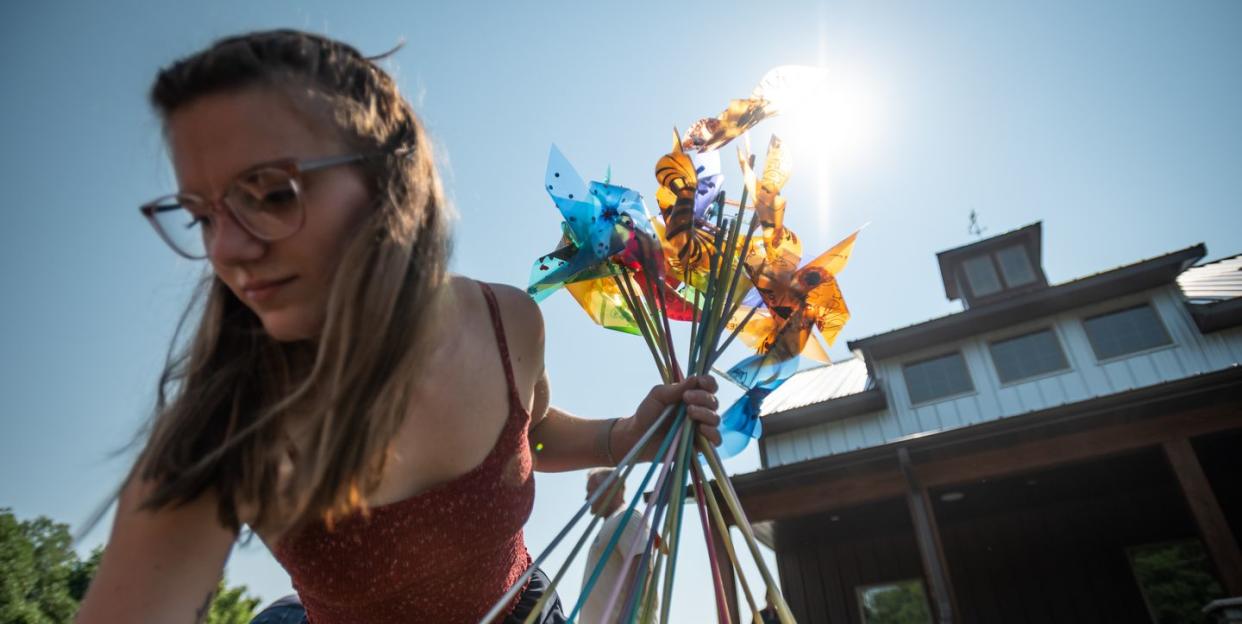
"Hearst Magazines and Yahoo may earn commission or revenue on some items through the links below."
Eight-hundred and fifty-seven pinwheels and butterflies stand planted across the lawn outside Art in Motion in Holdingford, Minnesota, alongside the Lake Wobegon Trail. For Susan Egbers of St. Cloud, Minnesota, one of the pinwheels is for her husband, John Egbers, an avid cyclist who was killed by a distracted driver in 2018. The rest stand for the other 856 bicyclists who were also killed by drivers in the U.S. that year.
“The pinwheels represent the moving wheels of a bicycle, and the butterflies represent a new life form,” Egbers told Bicycling.
→ Not a member of Bicycling All Access? Then what are you waiting for? 🚲
The art installation was featured during Bike Week, a festival organized by Art in Motion, an art gallery and cafe, and the Cycling Museum of Minnesota for celebrating “all things bike.” Egbers came up with the idea for her art installation after reading a Bicycling article on the number of cyclists killed in 2018. She had initially run the project by her city’s art department, but they didn’t understand her vision, Egbers said. She then pitched her idea to Art in Motion, and art director Lily Brutger “enthusiastically” accepted it.
Community members were invited to come help create and decorate the pinwheels and butterflies from July 20 to 24. Egbers and a crew of volunteers and family members then installed them on July 25.
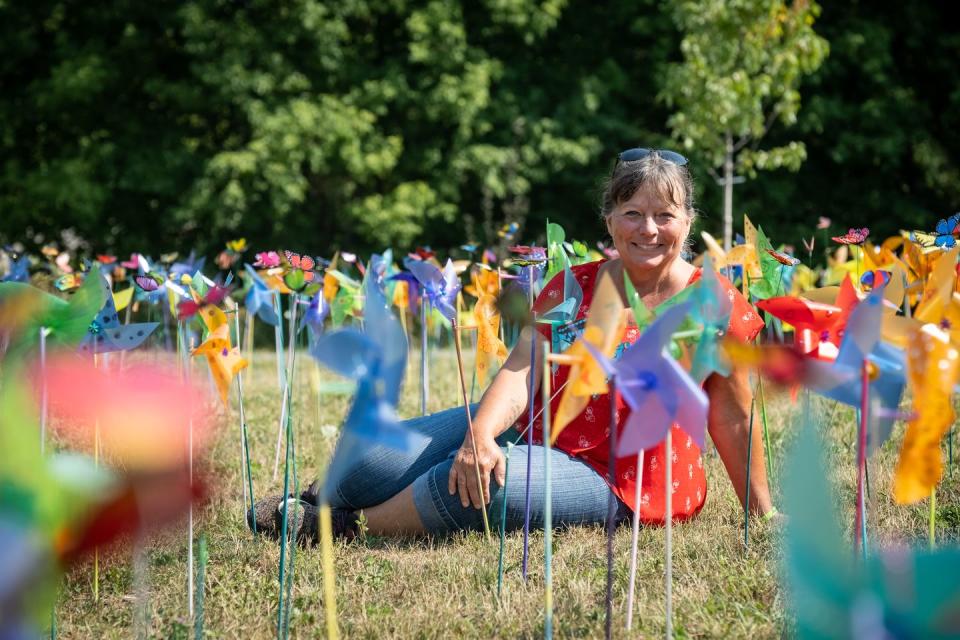
In part, Egbers’s pinwheel and butterfly installation is a memorial to those 857 lives prematurely and unjustly taken, but she says she also wants to raise awareness for just how many cyclists are killed by drivers. In the years following John’s death, Egbers became involved in bike safety advocacy projects, though she says it’s time for her to largely leave that effort up to others.
“What good does passing a law do? So you really have to do something to show people what happens,” Egbers said of her project, which gives Art in Motion visitors a visceral visual of the death toll. “This art awareness display is my last attempt to make an impact and try to reach the people who have the power to create change.”
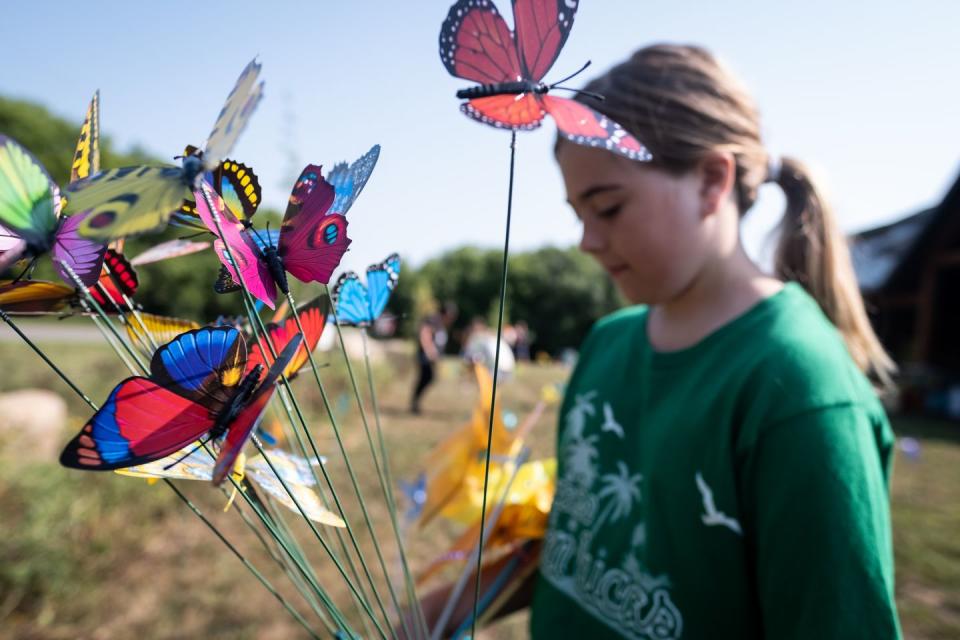
John was hit during his second attempt at the Trans Am Bike Race (TABR)—a self-supported ultra distance cycling race that follows the Bikecentennial route across the country—in 2018. He had made his first attempt at completing the race the year prior, but while passing through Yellowstone he went off the tarmac, hit a boulder, broke his wrist, and had to come home.
Egbers took it as a sign that he shouldn’t try racing TABR again. “I was right,” she said, looking back, but she couldn’t tell him not to. John was determined—and at 64 years old, he had best do it sooner rather than later. So John dedicated himself to training. Egbers boasted he was in such good shape that the young guys in his local riding group made it their goal to get ahead of the “old guy.”
On June 14, 2018, John was in Kansas, roughly halfway through his second TABR attempt. He stopped at a roadside memorial for a cyclist, who had been killed by a driver at that very spot, and left a note that said, “We are all diminished by one.” Just 20 minutes down the road, John was hit by a driver himself.
Egbers remembers her cell phone pinging off the hook that day as she received message after message from “trail angels”—a term popularized for those who volunteer unexpected aid to thru hikers—in the Wichita area. (In this case, trail angels are fans of the race and members of the cycling community who virtually keep tabs on riders via their live-tracking beacons online in order to offer assistance.)
Some trail angels noticed that John’s beacon had come to a stop, and then suddenly began moving over 200 mph in the opposite direction, towards Wichita. They realized he was likely being airlifted, and as word spread, many reached out to Egbers with offers to help: a free place to stay in the area, car rides to wherever she needed, food, and more.
A trail angel named Tiara Adams volunteered to pick up Egbers from the airport and take her to the hospital. It was a twist of fate—Adams knew exactly what Egbers was about to go through as she had experienced much the same, since her previous husband had been killed in a car accident three years beforehand. Adams, along with her husband Dave, also sat with Egbers in the waiting room while John underwent surgery, then bought her food and insisted that she eat. Later, Adams would drive Egbers to the funeral home to pick up John’s ashes, then take her to the airport to go home.
“She ended up being the right trail angel for me,” Egbers said.
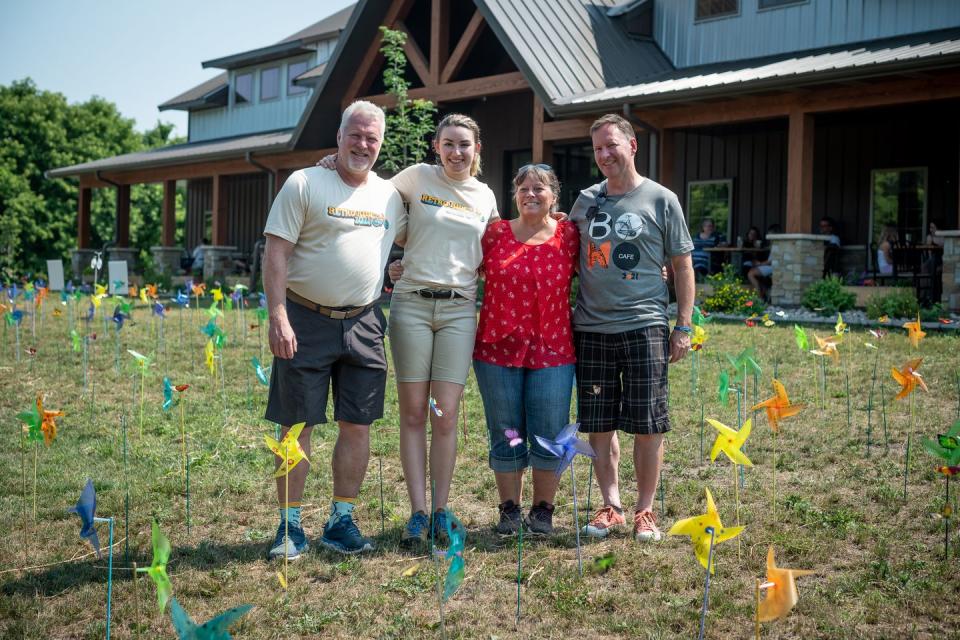
John spent 22 agonizing days in the ICU, paralyzed from the chest down, with numerous broken bones, undergoing surgeries, and at one point battling pneumonia. He succumbed to his injuries on July 5, and the world was again diminished by one.
“I felt so, so, so alone… like a bubble was wrapped around me, like I couldn’t expand out into the world,” Egbers said. “Worse than that, my husband lost his whole life, the rest of his life.”
The driver who hit John was never charged—not even a basic traffic violation for a life taken. The driver’s only defense, Egbers said, was that they were “looking at the fields.” And for how long, you wonder, too. The straight Kansas road where the driver hit John stretches wide-open and unobstructed for miles.
“You could see a turtle walk across it... My husband’s life has to mean more than an animal’s, he was treated like an animal,” Egbers said, referencing the district attorney who decided not to prosecute the driver.
John’s story will be documented in depth by Heath Ryan, an author and ultra cyclist who met John during TABR in 2018—he flew out to Minnesota to help with the art installation as well and to meet Egbers and her family. Ryan has previously written about renowned ultra cyclist Mike Hall, who was killed by a driver in Australia in 2017 and whose death was also unjustly litigated; his book is called Kangaroo Justice and the Death of Mike Hall.
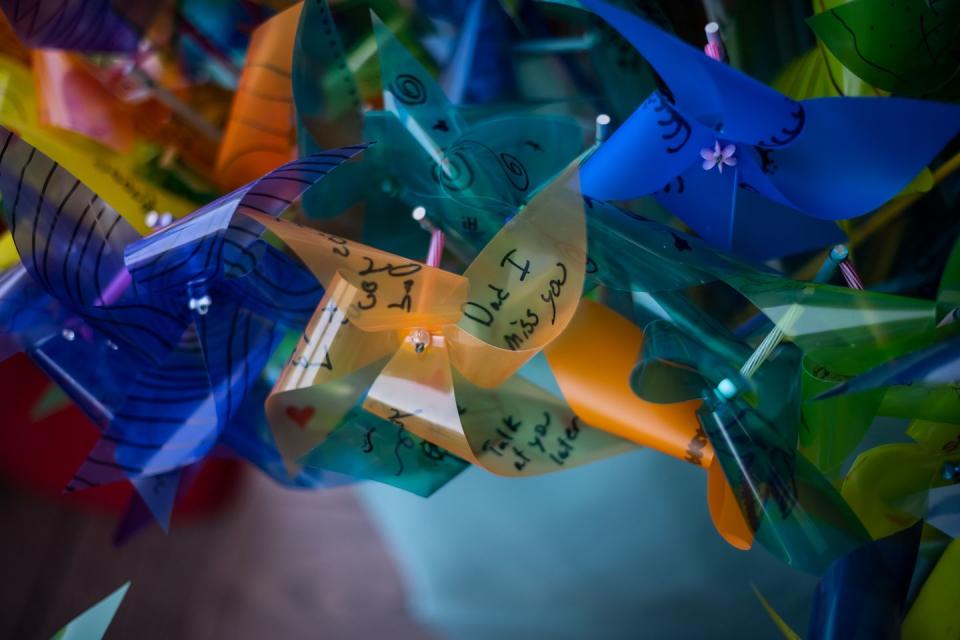
The pinwheels and butterflies will remain in place through the end of this week. Egbers’s original intent was to distribute them throughout the community, but Art in Motion owner Greg Konsor has decided to keep them, so that they can be reinstalled every year during the community’s Bike Week, reducing (hopefully) their count each time to represent the number of cyclists killed the year prior.
Egbers hopes that one day they won’t need to put up any at all, but she knows a great deal would need to change to get to that point. “The harsh reality is that will never happen,” she said.
Editor’s Note: Amendments to data since the release of the National Highway Traffic Safety Administration’s fatality report in October 2019, referenced by the earlier Bicycling piece and Egbers in her project, now put the 2018 U.S. cyclist fatality total at 871.
You Might Also Like

